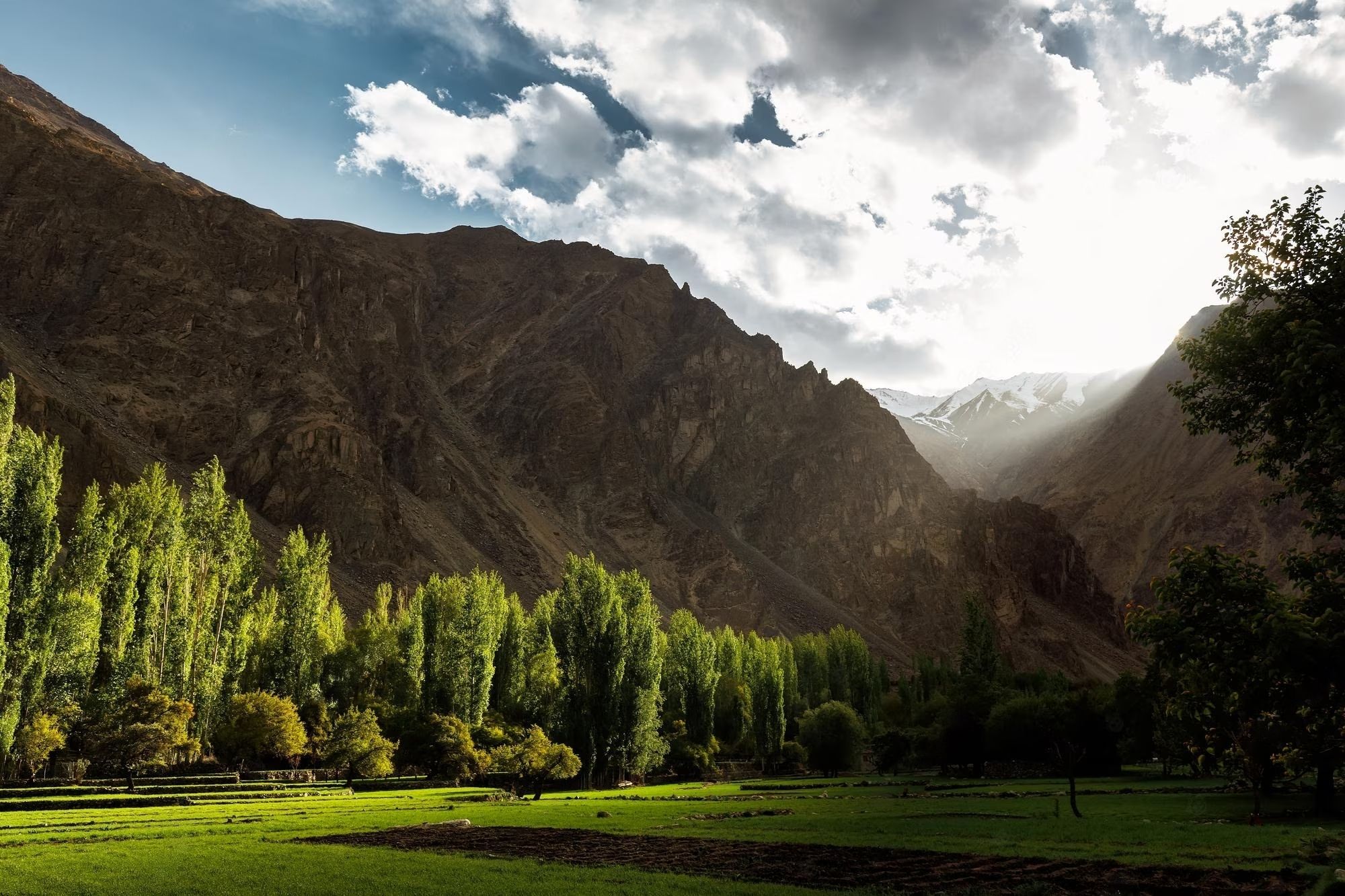Capturing Breathtaking Landscape Photography in India.

Capturing the breathtaking landscapes of India through photography is a rewarding experience for both amateurs and professionals alike. With its diverse terrain, rich cultural heritage, and stunning natural beauty, India offers endless opportunities for landscape photography. In this blog post, we will explore some valuable tips and techniques for shooting landscape photography in India, helping you capture the essence of this captivating country through your lens.
Table of Contents:
- Understanding the Indian Landscape
- Researching and Planning Your Shoot
- Choosing the Right Gear
- Composing Your Shots
- Mastering Light and Shadows
- Utilizing Filters and Accessories
- Capturing Unique Perspectives
- Exploring Iconic Landscape Locations in India
- Being Mindful of Cultural Sensitivities
- Post-Processing Tips for Stunning Results
Understanding the Indian Landscape:
India is a land of diverse landscapes, ranging from the snow-capped peaks of the Himalayas to the sandy beaches of Goa, from the serene backwaters of Kerala to the vast deserts of Rajasthan. Each region offers its own unique photographic opportunities. Take the time to understand the geography, climate, and natural features of the area you wish to photograph.

Researching and Planning Your Shoot:
Before embarking on your photography adventure, conduct a thorough research about your chosen location. Familiarize yourself with the best time to visit, weather conditions, local customs, and any permits or permissions required. Planning your shoot in advance will ensure you make the most of your time and maximize your chances of capturing stunning images.
When it comes to landscape photography in India, having the right gear is essential. Invest in a sturdy tripod to keep your camera steady, especially for long exposure shots. Wide-angle lenses are ideal for capturing expansive vistas, while telephoto lenses can help you isolate specific elements in the scene. Don't forget to pack extra batteries and memory cards to avoid missing out on precious moments.

Composition plays a crucial role in landscape photography. Utilize the rule of thirds to create visually appealing images, placing key elements off-center. Experiment with leading lines, foreground interest, and framing techniques to add depth and perspective to your photographs. Remember to maintain a balance between the foreground, midground, and background elements to create a harmonious composition.
Lighting is a fundamental aspect of landscape photography. In India, the golden hours of early morning and late afternoon offer soft, warm light that enhances the natural beauty of the landscape. Pay attention to the direction of light and how it interacts with the elements in your scene. Embrace the interplay of light and shadows to add depth and drama to your photographs.
Utilizing Filters and Accessories:
Filters are valuable tools for landscape photographers. Graduated neutral density filters help balance the exposure between the sky and the land while polarizing filters reduce reflections and enhance colors. Experiment with different filters to achieve the desired effect. Additionally, accessories such as a remote shutter release and a lens cleaning kit can greatly assist you in capturing and maintaining high-quality images.
Capturing Unique Perspectives:
To create captivating landscape photographs, try to capture unique perspectives that showcase your personal vision. Explore different angles, vantage points, and viewpoints to present familiar scenes in a fresh and creative way. Don't hesitate to experiment with different compositions and techniques to add your own artistic touch to the images.

Exploring Iconic Landscape Locations in India:
India is home to numerous iconic landscape locations that have captivated photographers for decades. From the serene beauty of the Taj Mahal in Agra to the majestic landscapes of Ladakh, there are endless possibilities to explore. Visit places like Rann of Kutch, Valley of Flowers, Hampi, and more to witness the beauty and diversity of India's landscapes.
Being Mindful of Cultural Sensitivities:
While photographing in India, it's essential to respect the local culture and traditions. Seek permission when photographing people, especially in religious sites and rural areas. Engage with the local community, learn about their customs, and show genuine interest in their way of life. Building a connection with the locals can result in more meaningful and authentic photographs.
Post-Processing Tips for Stunning Results:
Post-processing is an integral part of landscape photography. Use editing software to enhance your images and bring out their full potential. Adjust the exposure, contrast, and color balance to achieve the desired mood. Be mindful of maintaining a natural look while enhancing the details and sharpness of your photographs.
Conclusion:
With its captivating landscapes and rich cultural heritage, India offers a treasure trove of photographic opportunities for landscape enthusiasts. By understanding the Indian landscape, planning your shoots, choosing the right gear, and applying the tips and techniques discussed in this blog post, you can elevate your landscape photography and capture stunning images that tell a story of India's beauty. Embrace the diversity, immerse yourself in the experience, and let your creativity soar as you explore the captivating landscapes of India.
FAQs
1. Question: What camera gear is best suited for landscape photography in India?
Answer: When it comes to capturing the beauty of Indian landscapes, a DSLR or mirrorless camera with interchangeable lenses is recommended. Wide-angle lenses are particularly useful for capturing the expansive vistas that India has to offer.
2. Question: How do I choose the right time of day for landscape photography in India?
Answer: The golden hours of early morning and late afternoon are generally the best times for landscape photography in India. The soft, warm light during these times adds a beautiful touch to your images.
3. Question: Are there any special permits required for photographing in certain locations in India?
Answer: Yes, some locations in India, especially protected areas and heritage sites, may require special permits or permissions for photography. It's important to research and comply with the specific requirements of each location.
4. Question: How can I capture the vibrant colors of Indian landscapes in my photographs?
Answer: Pay attention to the lighting conditions and use the appropriate white balance settings on your camera to capture the true colors of the landscape. Post-processing techniques can also help enhance the vibrancy of your images.
5. Question: What are some essential composition techniques for landscape photography in India?
Answer: The rule of thirds, leading lines, and foreground interest are some common composition techniques that can add visual interest to your landscape photographs in India.
6. Question: How can I avoid overexposure or underexposure in high-contrast landscapes?
Answer: To tackle high-contrast scenes, you can use techniques like exposure bracketing and graduated neutral density filters to balance the exposure between the bright and dark areas of the frame.
7. Question: What are some lesser-known but pictures que landscape locations in India worth exploring?
Answer: India is full of hidden gems for landscape photography. Places like Ziro Valley in Arunachal Pradesh, Khajjiar in Himachal Pradesh, and Tarkarli Beach in Maharashtra are some lesser-known yet picturesque locations.
8. Question: How can I respectfully photograph people and their daily lives in rural areas of India?
Answer: It's important to seek permission before photographing people, especially in rural areas. Engage with the locals, show genuine interest, and build a connection to capture authentic and respectful images.
9. Question: What are some recommended post-processing techniques for landscape photography in India?
Answer: Post-processing techniques like adjusting exposure, contrast, and color balance, as well as fine-tuning sharpness and clarity, can help enhance your landscape images and bring out their full potential.
10. Question: How can I showcase the cultural diversity of India in my landscape photographs?
Answer: Look for elements that reflect the cultural identity of the place you're photographing, such as architecture, traditional attire, or cultural events. Including these elements in your compositions can help convey the cultural richness of India's landscapes.

